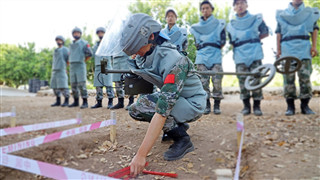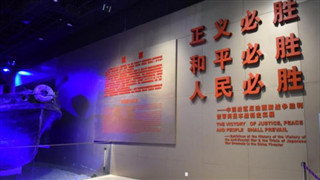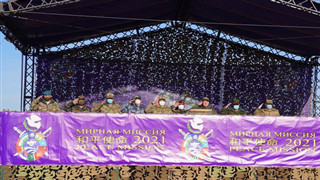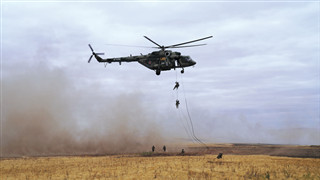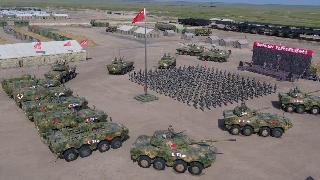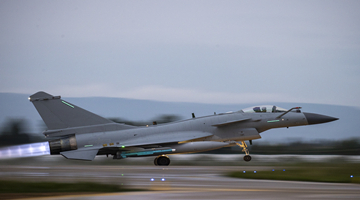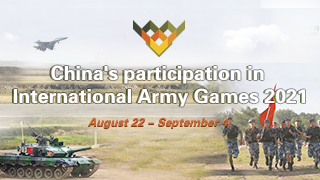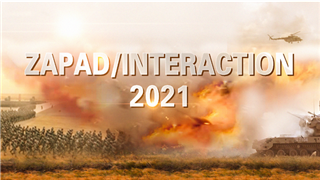By Li Chun
ORENBURG, Russia, Sept. 22 -- When talking about the Peace Mission-2021 joint anti-terrorism military exercise for the Shanghai Cooperation Organization (SCO) member states, Lieutenant Colonel Kan Jinzhu, battalion commander of a combined-arms brigade under the PLA Northern Theater Command and also the commanding officer of the ground assault group of the Chinese participating troops, said that one of their goals to participate in the exercise is to explore the ability of a combined-arms battalion to execute missions under cross-border, unsupported conditions.
On September 21 local time, the last live-fire joint training for the Peace Mission-2021 was conducted at the Donguz training range in Orenburg Oblast, Russia. The ground assault group composed of infantry combat vehicles (ICVs) driven by the Chinese participators, took the lead to lure the “terrorists” into a trap and then launched an attack on the “terrorist organization” with the firepower support of fighter jets and long-range cannons.
A squad leader usually acts as the commander of each ICV and is responsible for handling the on-site situation and information communication on the spot, and can even make skip-level report if necessary. According to Kan Jinzhu, this puts forward higher requirements on the commanding capability of the squad leaders.
In fact, in the process of deepening reform of the Chinese armed forces in all respects in recent years, the training of ICV commanders has focused on the cultivation of the inter-disciplinary talents.
Wei Guangheng, a squad leader under the 1st Battalion of the combined-arms brigade, told reporters that, apart from grasping the skills of the ICV gunner and driver, the ICV commanders are also required to have a good command of platoon-level tactical commanding and handling of special situations, which requires better capacity to play to the score. “When encountering a problem, the ICV commanders should make quick judgments and give suggestions while reporting, instead of instantly reporting to the superior.”
Actually, in the Chinese participating troops, the exercise serves as a test not only for commanders of the armored combat vehicles, but also for squad leaders in the key positions such as logistical support, equipment maintenance, and medical services.
Major Lin Chengwei, chief of the brigade’s firepower section, said that undoubtedly, to reach the goal of exploring the combined-arms battalion’s capacity to execute missions independently in a foreign land should be guaranteed by comprehensive support of different professions. He expected that the troops of various professions would take the opportunity of the exercise to get improvement, thereby enhancing the overall combat effectiveness of the battalion.
“The combat capability of the Chinese military is tested in every overseas joint military exercise it participates in,” said Senior Colonel Li Shuyin, a researcher with the Academy of Military Sciences of the Chinese PLA.
Li said that the joint exercise also aims to test the cooperative ability of the armed forces of the SCO member states. In recent years, the Chinese military has sent troops to go abroad to hold joint exercises with the militaries of Russia and other countries for many times, aiming to improve its combat capability by learning from foreign counterparts, have better coordinate with foreign troops in future joint operations and enhance capabilities of jointly responding to threats and countering international terrorist organizations.
